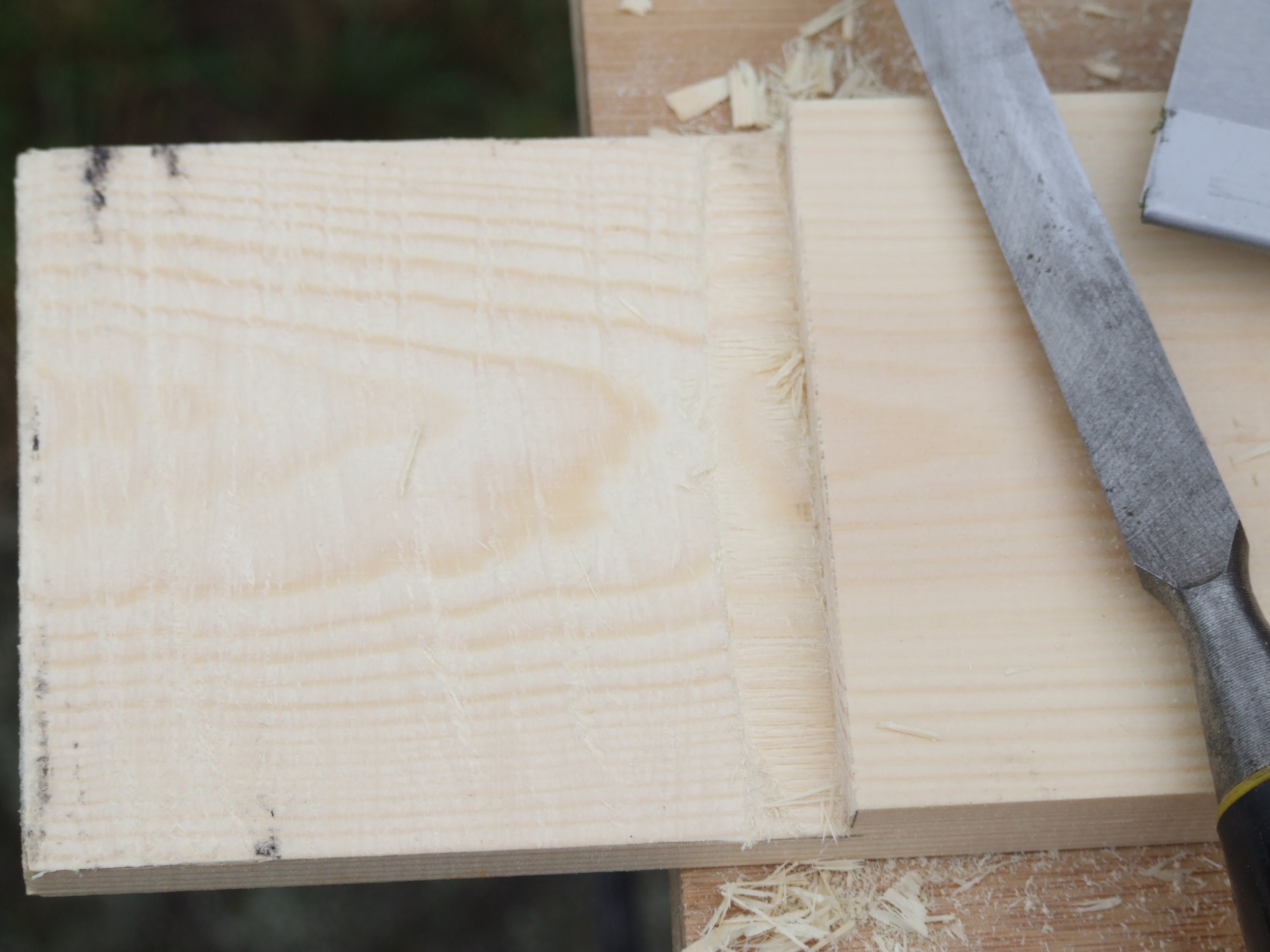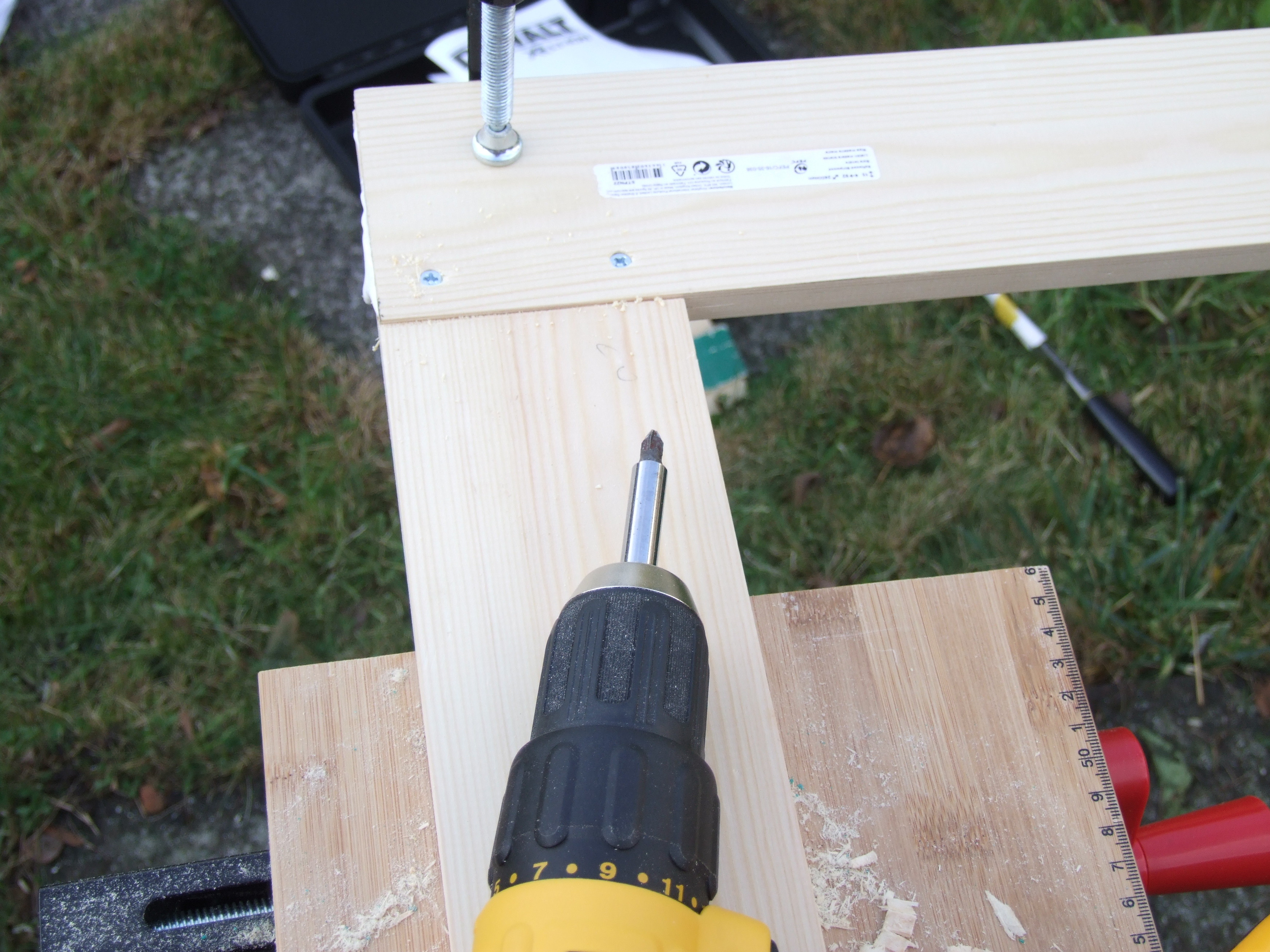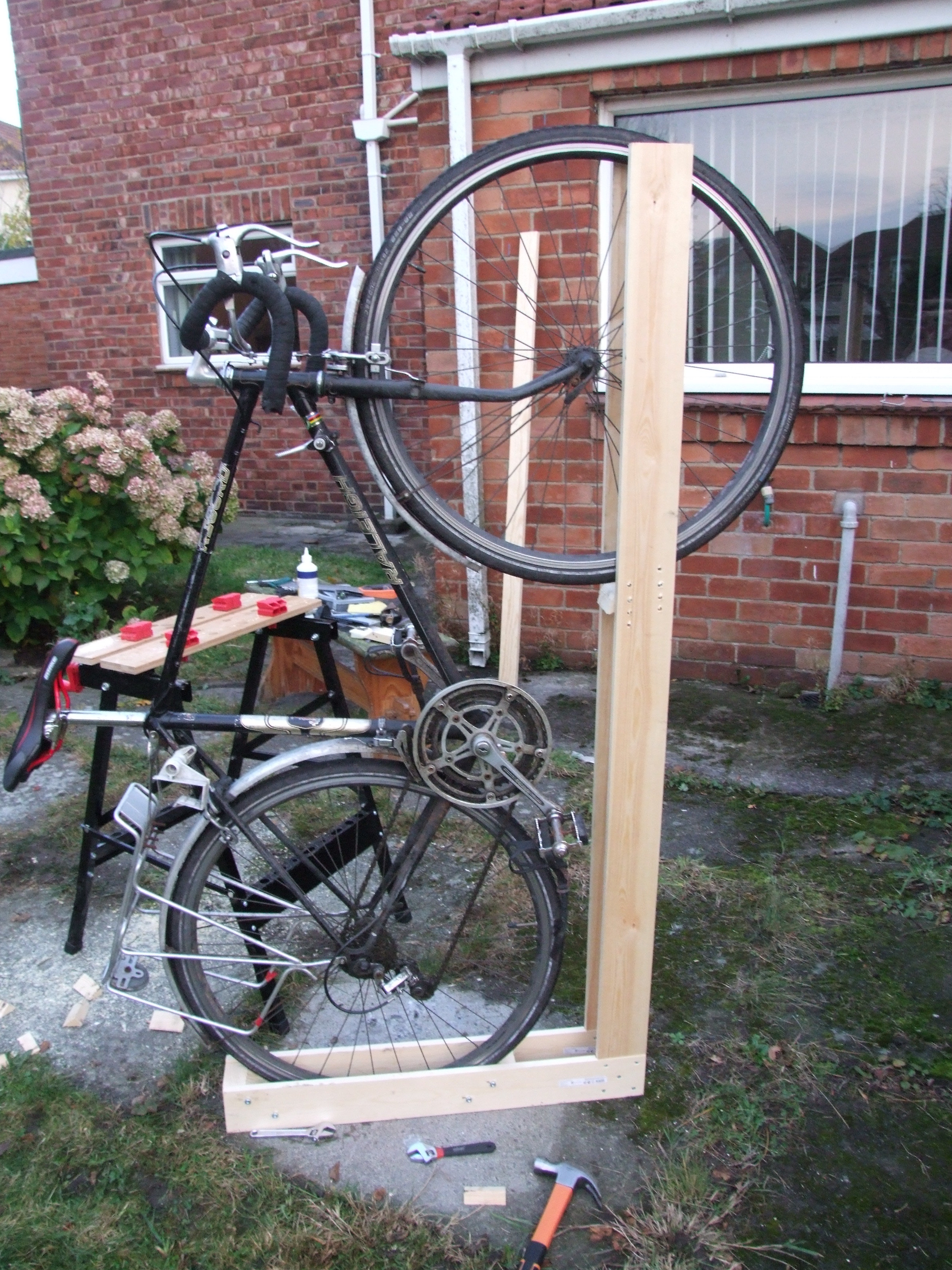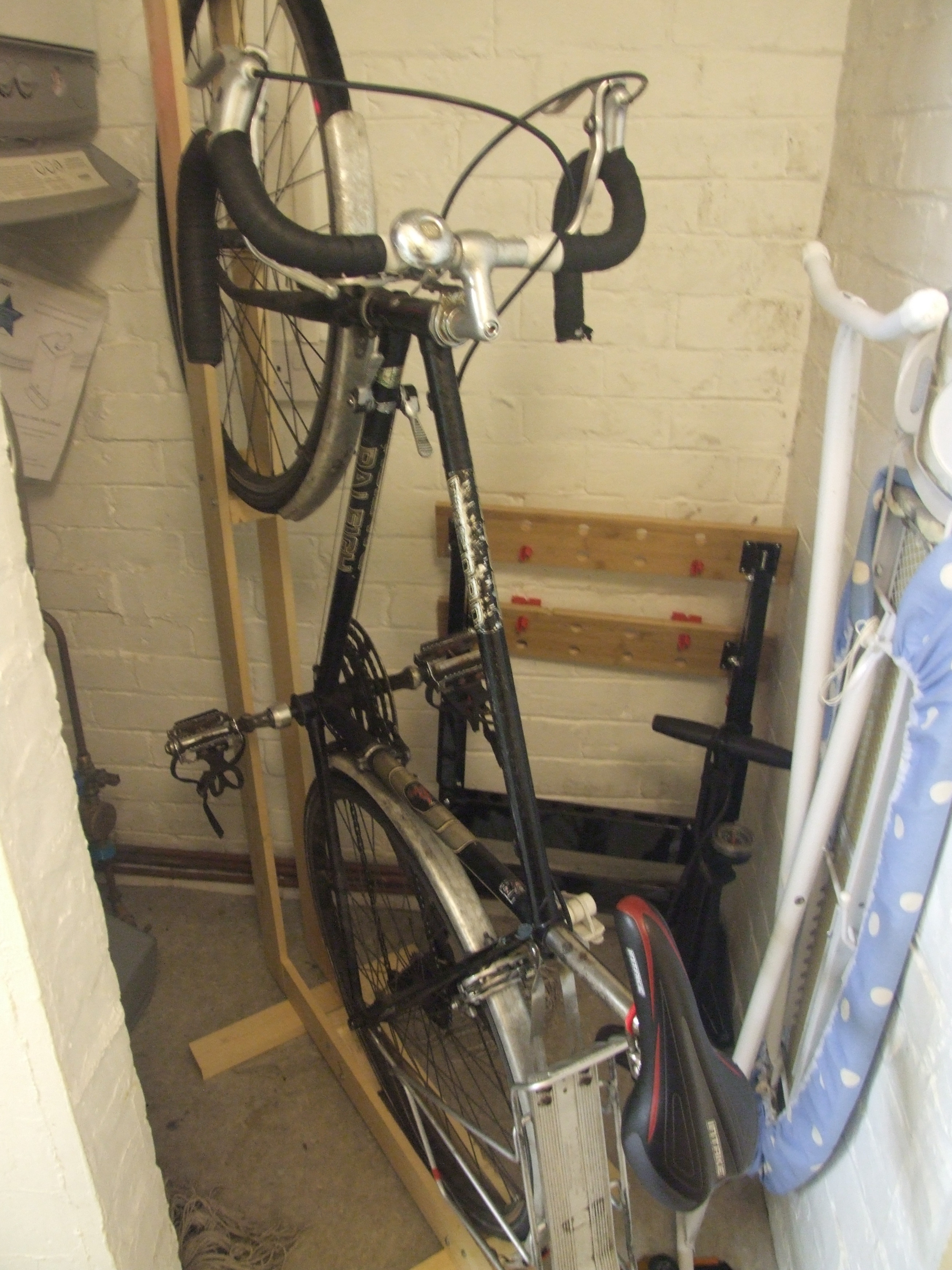After a few months of balancing my bicycle between two walls where once, it would seem, was a pantry, it got too annoying. Ideally one would like some kind of stand to hold the bike out the way, vertically. The internet turns up many such designs. After a trip around the rather poor selection of wood available at B&Q (the only place open), I settled on something slightly different—an L-shaped half-lapped frame with wooden chocks to space it, and the bicycle balanced with just a small inward turning moment counteracted by its own weight.
After thinking about this for a week I decided it would be plenty stable enough without the need to to make it a ‘T’ or inverted ‘7’. Lest I sound entirely stupid, imagine the moment of putting the bike in, where its own weight is supported (and so can’t act); the only force acting on the stand is presumably the front wheel pushing it away, and the stand bouncing all the time would be annoying. As it happens I was completely wrong about this assumption, but anyhow.
First off, the half-lap joints: as you can see, the timber I ended up with is about 1/2" wider than the depth of my Tenon saw, so the last 1/2" was taken off rather clumsily with a cross-cut panel saw and then pared down with a chisel:1
Assemble, true up, glue and temporarily clamp against the try square, and then add two screws to hold the alignment:
…remove clamp, three more screws and give it all a while to get some handling strength. Meanwhile, the chocks—I eyeballed the chamfer and cut it off rather roughly, but the worst thing was trying to drill square. Years of relying on a pillar drill do not help. Turns out it’s mainly about sight-lines: the first block was by far the worst, but after that it went relatively smoothly (these are all from the exit side). [gallery ids=“254,255” type=“rectangular”] There are no photos of the highly irritating next stage, but by some juggling I managed to get two chocks bolted through the bottom to line the whole thing up and hold the bottom wheel. At this point I realised that it was too short to put a chock above the top wheel whilst still maintaining balance—I must have slightly mismeasured the balance point. But we don’t actually need one there, so I did a rough guess at the top chock position and then drilled a set of parallel holes:
Incidentally, someone is probably going to point out that I’m not drilling into scrap. It’s true, and bad—but I don’t have any scrap, the drill bit is sharp, and you can avoid bad breakout damage if you’re careful. Here’s a shot with the whole thing together:
Which was really rather stable. Indoors on the lino it lacked horizontal stability, so I added two stabilising bars from leftover 2" stock (whence the chocks):
And there we have it: not bad for a day’s work without access to a proper workshop. In use it takes about 3-4" of movement to generate a turning moment away from the stand, so I added a bungee on top to catch it if someone knocks the bike. And it’s much nicer to come home to than wrestling the thing round the corner was before.
It could just have been pared. But at the time I didn’t have a bench, and was a bit rusty. ↩︎





